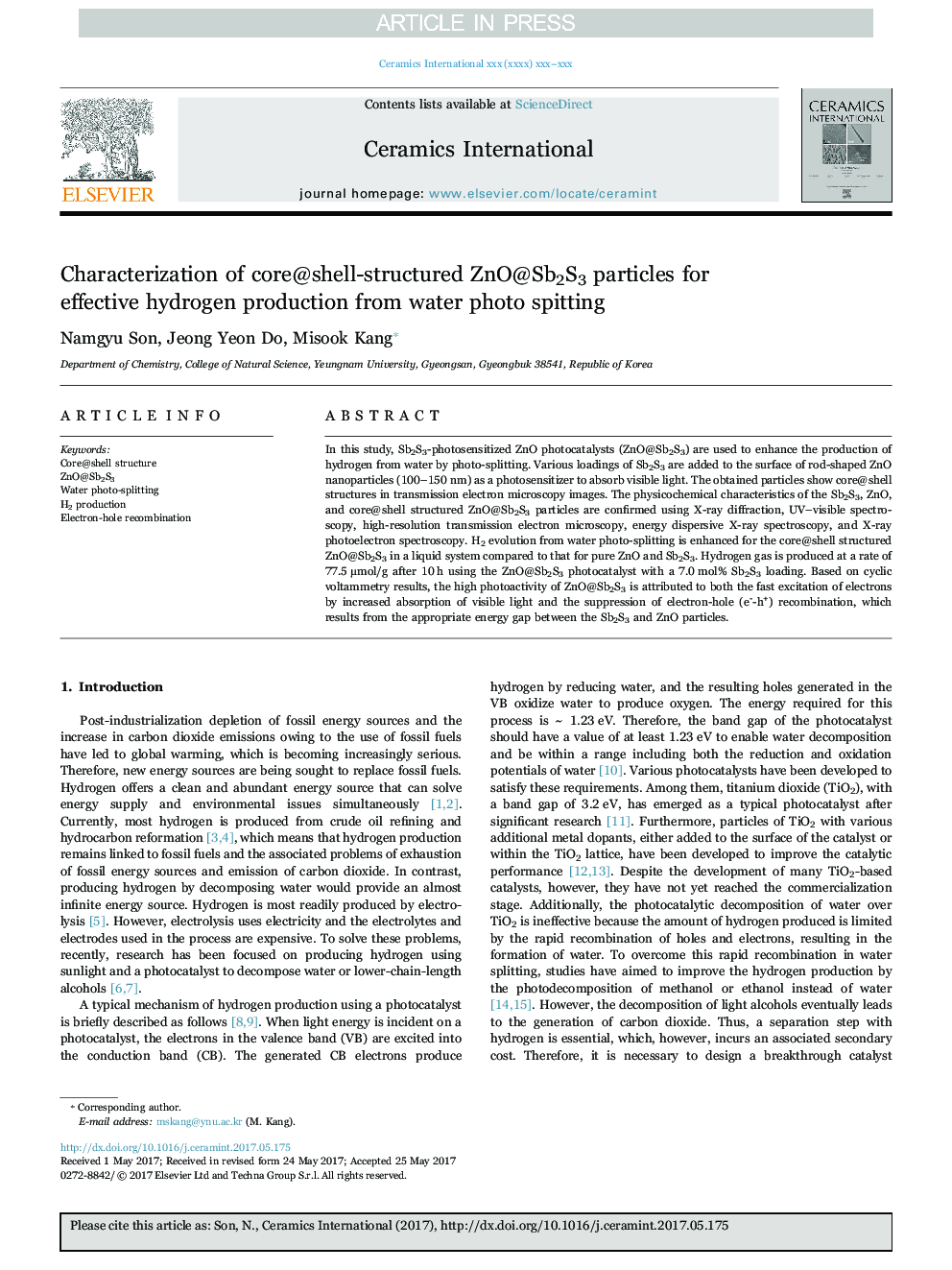| Article ID | Journal | Published Year | Pages | File Type |
|---|---|---|---|---|
| 5438080 | Ceramics International | 2017 | 10 Pages |
Abstract
In this study, Sb2S3-photosensitized ZnO photocatalysts (ZnO@Sb2S3) are used to enhance the production of hydrogen from water by photo-splitting. Various loadings of Sb2S3 are added to the surface of rod-shaped ZnO nanoparticles (100-150 nm) as a photosensitizer to absorb visible light. The obtained particles show core@shell structures in transmission electron microscopy images. The physicochemical characteristics of the Sb2S3, ZnO, and core@shell structured ZnO@Sb2S3 particles are confirmed using X-ray diffraction, UV-visible spectroscopy, high-resolution transmission electron microscopy, energy dispersive X-ray spectroscopy, and X-ray photoelectron spectroscopy. H2 evolution from water photo-splitting is enhanced for the core@shell structured ZnO@Sb2S3 in a liquid system compared to that for pure ZnO and Sb2S3. Hydrogen gas is produced at a rate of 77.5 μmol/g after 10 h using the ZnO@Sb2S3 photocatalyst with a 7.0 mol% Sb2S3 loading. Based on cyclic voltammetry results, the high photoactivity of ZnO@Sb2S3 is attributed to both the fast excitation of electrons by increased absorption of visible light and the suppression of electron-hole (e--h+) recombination, which results from the appropriate energy gap between the Sb2S3 and ZnO particles.
Related Topics
Physical Sciences and Engineering
Materials Science
Ceramics and Composites
Authors
Namgyu Son, Jeong Yeon Do, Misook Kang,
